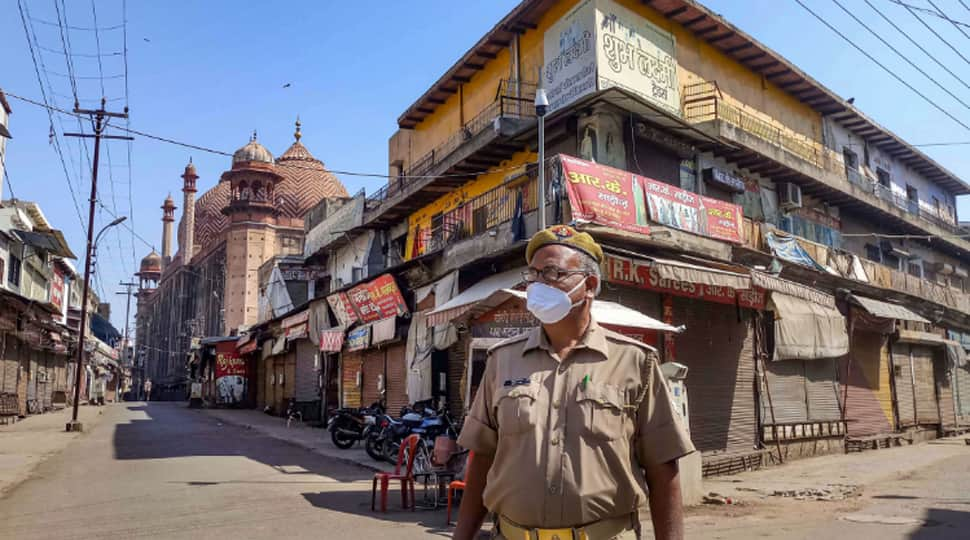Amid the rising coronavirus cases in the country, Uttar Pradesh's Agra has emerged as a model in best practices in cluster management to break the dreaded chain of coronavirus COVID-19.
After Rajasthan's Bhilwara, 'Agra Model of Containment' has now emerged as another success story. Addressing a press conference on Saturday, Lav Agarwal, Joint Secretary of Union Health Health Ministry, on Saturday explained how the spread of the deadly virus was curbed Agra and now the local administration succeeded in controlling the coronavirus.
During the press briefing, Aggarwal lauded Agra administration and community health workers and explained how the local administration worked in close coordination with Health Ministry to develop a 'Containment and Rapid Emergency Response System'.
The people involved in the mission coined a slogan 'Together Agra will win' to encourage each other as they knew the fight was tough but they were aware of the fact that timely action will help them in breaking the chain and the health workers ultimately managed to do that.
The first step was to trace the epicenter or hotspot. The health workers traced the first person who was tested positive for coronavirus in Agra and then they managed to find out the entire travel history of the infected person. The team involved in this task managed to find out that the infected person had arrived in Delhi rom Italy on February 25 and he had come to Agra on the same day. It was also found that the infected person stayed at his home on February 25 and had visited his factory too on the same day.
It was also found that the coronavirus positive person had stayed at his home on February 27 too and he had gone to a restaurant on February 28 and had visited his factory also on the same day. It was also found that the man had visited a restaurant again on February 29 and had visited the district hospital on March 2 after he started feeling coronavirus symptoms.
Once it was confirmed that the person was infected with coronavirus COVID-19 it was a herculaean task for the local administration to trace and quarantine everyone who had come in contact with the infected person. The local administration then swung into action without wasting any time and made a full ring chain.
The Integrated Control and Command Centre (ICCC) of Agra Smart City which was set up as part of Smart City mission was converted into a war room. A total of 1,248 teams were deployed, which surveyed over 9.3 lakh population by screening 1.65 lakh households. A central helpline was also launched in Agra district.
The SSP of Agra Police constituted teams of police and traffic police to prepare for the cluster lockdown.
After forming different teams, the local administration demarcated the 3 km area around the hotspot. The total population in this area was around 9.30 lakhs and community health workers started door-to-door screening to check for coronavirus positive patients.
A total of 1,248 with two person in each team was formed to conduct the door-to-door at this large level. The team visited each household to find out of anyone is suffering from fever, cough or any other symptoms of COVID-19. After careful screening it was found 2,500 people in the 3km area around the epicentre was showing coronavirus symptoms. It was also found that 36 people living in this area had visited abroad in the last 28 days and three of them showed medical symptoms.
The local administration set-up the treatment facility on the basis of public-private partnership and those who were symptomatic of coronavirus were kept at this facility.
The local administration built 566 paid institutional quarantine centre on the basisi of PPP model and they also constructed 3007 free institutional quarantine centre and 428 official quarantine centre. Agra District Magistrate and other senior officials kept a close eye over the whole development and kept on working to identify clusters.
It was not easy to put such a huge population under total lockdown as the main challenge before the district administration was to set up 'Door Step Distribution Chain' in order to ensure that the people living in the epicentre do not face the scarcity of essential items.
The district administration then identified the local food and medicione suppliers and ensured that they supply the essential items to each and every household. These shopkeepers were given e-pass to move in the affected area.
Another major challenge before the district administration was to ensure the supply of food for homeless people living in the containment zone. This was done with the help of e-commerce firms who were tasked with supplying food materials to people living in shelter homes.
The administration also created 'Citizenship Self Registry Platform' in order to allow the citizens to provide information to the health officials if they develop any coronavirus-related synmptoms.
The hard work of Agra administration padi rich dividends as till April 11, 5 cases have recovered in Agra and 87 are under watch. A total of 38 epicentres were identified by local administration, out of which 10 have been closed because of the end of the risk of coronavirus infection in these zones.
















